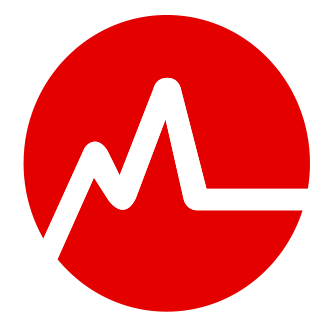Do you enjoy working out hard and pushing your body and mind to new levels of fitness?
If so, you must be amped about your MYZONE activity monitor, and the YELLOW and RED zones are probably your go-to zones. Because the YELLOW and RED zones are high or vigorous intensity zones, we must leverage them in the right way to maximize the training benefits associated with each.
In this blog, we’ll break down the YELLOW zone and how you can best use it as a part of your workout routine (keep an eye out for the RED zone blog coming soon).
What is it?
The YELLOW zone indicates 80-89% of maximal heart rate (MHR). It identifies vigorous/high intensity activity. You earn 4 MEPs per minute you are in the YELLOW zone.
Which activities will have us in the YELLOW zone?
Typically, activities that require a high amount of exertion using dynamic, large muscle movements are going to be required to get your heart rate into the YELLOW ZONE. Running and burpees are two good examples. Both cardio and resistance training activities can challenge you into the YELLOW zone – here are some suggestions for both.
Cardio
When we compare the YELLOW zone to the rate of perceived exertion (RPE) chart and the talk test, we would expect you to report an 8 or a 9 on a scale of 10 of exertion and to be able to say only two or three words before needing a deep breath.
Tempo or pace training, threshold training, and interval training are all great activities for YELLOW zone cardio work. See our previous blogs about tempo, threshold, and interval training for specifics on how to perform these types of training. During tempo/pace and interval training, you will alternate between periods of YELLOW and periods of GREEN, whereas in threshold training, you will hold YELLOW for an extended duration (20-45 minutes).
Image Caption: Here’s a profile of a ~25 minute threshold run (following a 10-15 minute warm-up not pictured).
Resistance Training
You may see your heart rate jump into the YELLOW zone during resistance training during your set (especially if you are performing hypertrophy, strength, or power training); however, your heart rate should only stay in the YELLOW zone for a minute or so before recovering back to a lower intensity zone (like BLUE) during your rest phase. If your goal is to sustain a YELLOW zone workout during resistance training, we recommend circuit training or supersets using dynamic movements.
Circuit training involves moving from one exercise to the next with minimal rest (15 to 30 seconds). A sample circuit could include 8 to 10 dynamic movements using large muscle groups – think squat jumps, kettlebell work, and battleropes – and performing each exercise for 30 to 60 seconds before rotating to the next exercise. Two or three rounds of that circuit would give you 20-45 minutes of some solid YELLOW zone action!
Supersets involve moving from one set of an exercise right into another exercise (either with opposing muscle groups or with the opposite extremity). You can perform two to three sets of each exercise back-to-back to maintain an elevated heart rate before moving into your next superset. This is a challenging way to move through your resistance training routine, so be sure to work your way up – maybe perform one or two supersets per workout and progress until you can perform your entire routine with supersets.
Whether you are performing cardio or resistance training to maintain a YELLOW zone workout, you should feel pretty wiped out afterward. If you don’t, check in with your trainer or a fitness professional at your facility to be sure that your maximum heart rate (MHR) is estimated correctly within the MYZONE system.
What are the benefits of working in the YELLOW zone?
Some of the benefits of training in the YELLOW zone include:
Improved aerobic capacity/maximal oxygen uptake: Oxygen uptake is your body’s ability to take in oxygen and supply it to working muscles efficiently. Maximal oxygen uptake is largely a function of cardiac output - how much blood the heart can pump. Stroke volume, the amount of blood your heart pumps in one beat, determines cardiac output. As you become more fit and challenge your heart at higher intensities (YELLOW and RED), you increase your heart’s stroke volume and cardiac output and improve your ability to take in oxygen and transport it to working muscles. More oxygen = more energy supply for working muscles = improved aerobic capacity!
Elevated lactate threshold: Lactate threshold is an indicator of your ability to exercise at higher intensities for a longer duration. Generally, the more fit you are, the longer you can exercise at higher intensities. Lactate threshold is the intensity of exercise during which there is an abrupt increase in blood lactate levels (your body is not able to clear it as fast as it is accumulating). Coinciding with higher blood lactate concentrations is the accumulation of hydrogen ions (metabolic byproducts of anaerobic metabolism) that contribute to acidosis (the burn or fatigue you feel during exercise). As you work at higher intensities and become more fit, your lactate threshold will increase, and you will be able to exercise longer at higher intensities before fatigue sets in.
Higher caloric expenditure: Because higher intensity exercise requires more fuel, your body burns more calories as it performs the metabolic processes necessary to fuel your exercise. You may find that you burn two to three times the number of calories per minute in the YELLOW zone than you do in the BLUE zone.
“Runners High” – Endorphin Release: With higher intensity exercise, comes an increase in the release of the “feel good” hormones – endorphins. Endorphins are a natural mood enhancer as they are designed to block our experience of pain or discomfort during high exertion. Enjoy friends!
How often should we be in the YELLOW zone?
The World Health Organization & American College of Sports Medicine recommend that adults perform >150 minutes of moderate-intensity (BLUE & GREEN zone) OR 75 minutes of vigorous-intensity (YELLOW & RED zone) cardiorespiratory activity per week (or a combination of the two). So, if you are spending ~30 minutes in the YELLOW zone three days a week, you will meet the minimum recommended guidelines.
Because the demands on your body are high when working in the YELLOW zone, it is a good idea to give yourself a day or two in between YELLOW zone workouts. Try using a BLUE or GREEN zone day in between your YELLOW days to offer your muscles and your nervous system a little recovery. If you hit a little bit of YELLOW on a BLUE or GREEN day, it’s all good, you just want to make sure that you were not hanging out in YELLOW for very long (more than a minute or two).
Of course, the total number or minutes per workout and total number of workouts per week that you spend in the YELLOW zone should depend on your fitness goals. Be sure to listen to your body and consult a fitness professional if you are not sure how to effectively use the YELLOW zone to achieve your goals.
We want to know how your workouts are going! Post your workouts and your MYZONE Workout Summaries on Twitter, Facebook, and Instagram using the hashtags #MYZONE, #myzonemoves, and #effortrewarded.
